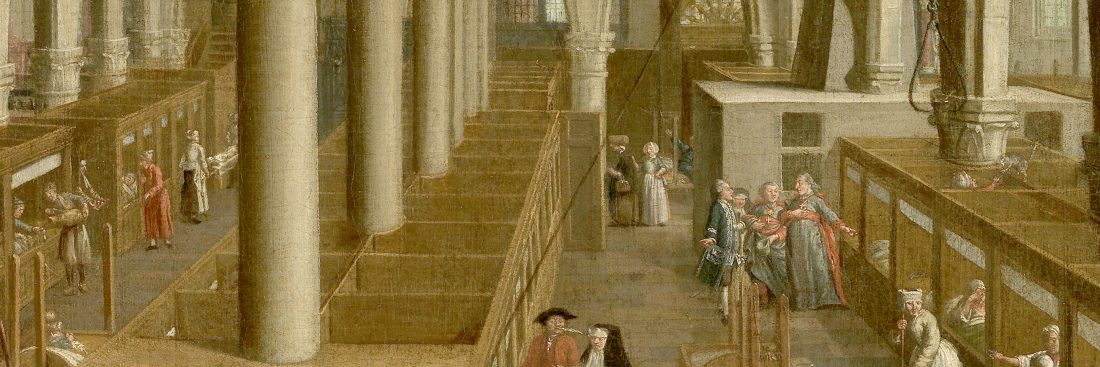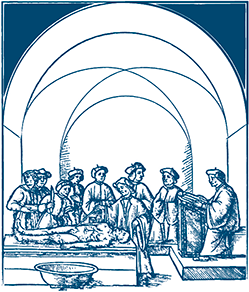Welfare Reform and Hospital Architecture in Portugal at the Dawn of Modernity


FORMA FLUENS
Histories of the Microcosm
Welfare Reform and Hospital Architecture in Portugal at the Dawn of Modernity
Joana Maria Balsa Carvalho De Pinho
University of Lisbon

A partial exception is constituted by three general studies [1], which nevertheless reveal a lack of understanding regarding the transition between these two periods. My current research project, titled Hospitalis [2], is meant to fill this gap. The project intends to study the phenomenon of Portuguese hospital architecture globally and systematically, from the end of the 15th century to the middle of the 16th, and to propose methods of dissemination and valuing of this patrimonial typology.
Within the context of my research project, I want to study subsisting specimens, their architectonic and artistic characteristics, their patrons and architects, and their relationship with other architectural typologies. Currently, I am in the process of analysing the buildings; as many of them have disappeared and material records are rare, I am resorting to textual information for their reconstitution in order to have a greater basis for analysis. This work is carried out in the context of a crypto art history [3].
As part of my ongoing research, in the article I set out to understand hospital architecture in its historical evolution and its dynamics of permanence and innovation To do so, it is necessary to understand the hospital in general and its social function as an institution.
The 15th and 16th centuries are reforming times in the care context. By the end of the Middle Ages hospitals began to show an institutional crisis with its main symptoms being reduced institutional dimension and inadequate forms of administration; these institutions also had limited financial resources and a lack or absence of administrators. Non-compliance with regulations and testamentary dispositions by their founders, degradation of their physical structures and a decrease in the quality of their care were also relevant signs of a profound crisis.
This situation will trigger a process of reformation and reorganisation of assistance and its institutions that in Portugal, as elsewhere, had a multiple dynamism. I highlight drafting regulatory instruments, revenue and expenditure books and property registers and replacing of administrators and appointing officials trusted by the monarchs. Also occurred an institutional reorganisation with fusions or incorporations and the creation of new institutions.
Parallel to the reforming processes run architectural innovations in which Portugal partakes with its own regional particularities. Indeed, not all Portuguese hospitals built or remodelled in this period embed the architectural novelties of the European mainland entirely or according to a standard approach. For instance, the application to hospitals of an innovative planimetric model, as developed in Italy for instance, implies the pre-existence of an ‘architectural culture’ that makes its assimilation possible. This is something that did not occur in Portugal, as I shall see, where in many hospital buildings only subtle elements will be incorporated.
Although the creation of the Hospital de Todos os Santos (All-Saints Royal Hospital) around 1479 is traditionally considered as the starting process of the reform process in Portugal, a look to the data allows us to date this process back at least a century.
As mentioned above, the Todos os Santos Hospital is one of the milestones in the reform process that took place in Portugal. However, this is a trend followed in other parts of the country with the creation of new hospitals seeking to implement reform, namely by bringing together smaller hospitals or integrating them into a larger one.
However, the reform process of assistance in Portugal would have another very relevant stage, the creation and diffusion of the ‘Confraternities of Mercy’ or Misericórdias. The foundation of these lay confraternities, which provided healthcare and had royal endorsement, lends particularity to the Portuguese healthcare reform process within the European panorama.
Joana M. Balsa Carvalho De Pinho is an art historian dedicated to the study of welfare and hospital architecture in the Renaissance (15th-16th centuries). She earned her PhD in 2013 at the University of Lisbon with a thesis on architecture promoted by 16th-century ‘Confraternities of Mercy’, funded by the Foundation for Science and Technology (FCT) via a PhD Fellowship. In her capacity as a member of research teams in Portugal, Brazil and Spain, she has carried out several research projects and is currently the principal investigator of the project “Hospitalis – Hospital Architecture in Portugal at the dawn of Modernity: identification, characterization and contextualization”, funded by FCT in 2018. Since 2020 July she is also an associate researcher on the project «Hosp_ARCHI – Circulation, appropriation and reassignment of architectonic models: Portuguese hospital architecture in the 16th century» (CEECIND/00691/2018).
This consists of the fading away of the caring role of the remaining confraternities and the consequent monopoly of the care activity held by the Misericórdias, which attained an expressive geographical coverage (inland and overseas territories) and a very significant social impact.
The Misericórdias were independent of one another and constituted an institutional model instituted by the royal authority but controlled by the local powers; they sought to fulfil the same care goals and had a common organisational matrix.
The Misericórdias would assure both the supply of health care and the administration of the main care institutions, including hospitals, not only in the big cities but also in the small villages. However, when the healthcare reform by Manuel I (1469-1521) began to be formulated, the Misericórdias were not meant to aggregate the hospitals. It was only at the end of Manuel’s reign, and then with greater incidence from 1560 onwards, that the management of hospitals was attributed to the local Misericórdias; this act was the most important milestone in the Portuguese public care reform.
Naturally, such a complex reform process had an impact on hospital architecture. The reforms will allow for the renewal of hospital architecture, namely the implementation of new architectural typologies. Also occurred a functional specialization of spaces and the construction of buildings with reasonable dimensions specifically designed for the performance of a care function. Some architectural and artistic attention were provided to these buildings as they became a symbol of civic pride. This architectural renewal will be in itself a particular aspect of the care reform, i.e. the reform process also comprised an urbanistic and architectural component.
This is the case of Hospital Real de Todos-os-Santos (“All-Saints Royal Hospital”), a building erected from scratch to house an institution created with the merger of about four dozen hospitals with medieval origin and designed according to the planimetric model of Milan’s major hospital, considered at the time one of the most relevant examples of modern hospital architecture.
It is important to highlight that Portuguese hospital mode is not just the result of the assimilation of an imported model, as it features architectural elements that are typical of 16th-century Lisbon, resulting in a hybrid building derived from the assimilation of a model that incorporates elements of local origin. Unfortunately, this hybrid solution, which is both aesthetically and technically up to date, will not generate an impact on any other hospital in mainland Portugal.
During the first half of the 16th century, the remaining hospitals created in the context of the reform would continue a medieval model characterised by reduced spatial and physical dimensions, in which architectural and artistic attention was not a concern. In some cases, they corresponded to pre-existing buildings, which were adapted and enlarged according to needs and in a disorderly fashion.
To conclude, to understand the historical evolution of hospital architecture, it is necessary to understand the hospital in general and its history as an institution. As we saw, the evolution of hospitals’ institutional history advances the appearance of new architectural designs and novel aesthetics.






